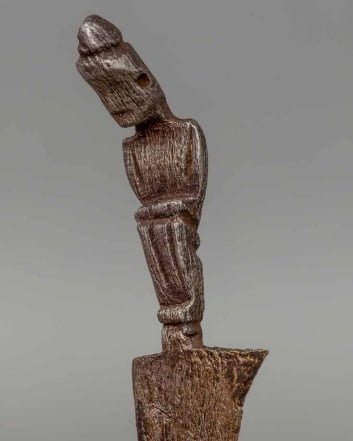

Prior to the classical keris designs that exist today, the ancient daggers of Southeast Asia carried a similar function, where these daggers were considered as sacred and deemed a tool for abridging the celestial and earthly worlds. The archeological findings of Dong Son daggers, Chinese bronze ceremonial daggers, the leaf-shaped Indian daggers, and other indigenous daggers predated keris, that may also suggest the root of this dynamic culture. Sajen, literally means “offering”, are normally made with one-piece iron with figural/humanoid hilt. The asymmetrical, tapering blade that is sharp on both edges fits the definitive characteristics of a keris. This type of keris is normally used for ritual offering for the deities, and also used as amulets for protection and good fortune.
These prototype designs derived during the religious syncretism era of the early kingdoms (6th–13th century) portrayed through the carved reliefs of ancient monuments especially in Java, the birthplace of the culture.